In the last post, I explored the various features of the Aegean Sea, called an elongated bay of the Mediterranean Sea, including the Strait of Dardenelles, which connects the Aegean Sea to the Sea of Marmara, as well as the Black Sea by the Strait of Bosporus; the location of ancient Troy, near the entrance of the Strait of Dardenelles; Crete; the Dodecanese Islands, which includes the islands of Rhodes and Patmos; the Cyclades Islands, which includes Santorini and Delos; the island of Chios; and the island of Euboea and its neighbor Skyros.
Now I am tracking the alignment to Delphi, an important religious, cultural and social center of Ancient Greece…

…the seat of Pythia, depicted here in a sculpture at the Paris Opera attributed to the female Swiss sculptor Martello in 1870, and who was the high priestess of the Temple of Apollo in Delphi, as well as the oracle who was consulted about important decisions throughout the ancient classical world…
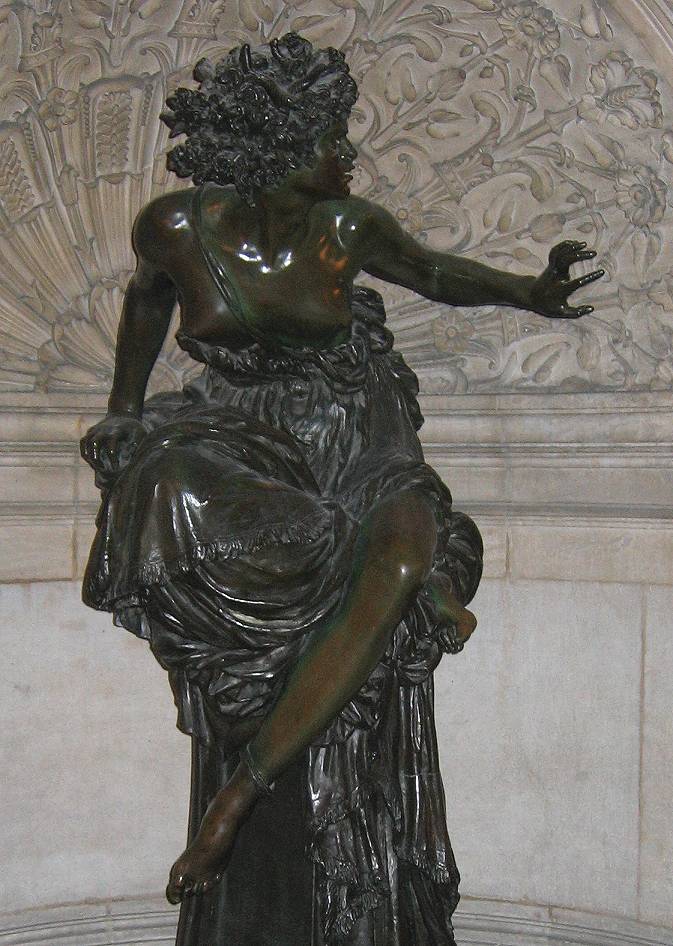
…and believed to be the center of the World. This is the Omphalos stone, inside the museum at Delphi, a symbol for Delphi’s status as the navel of the Earth…
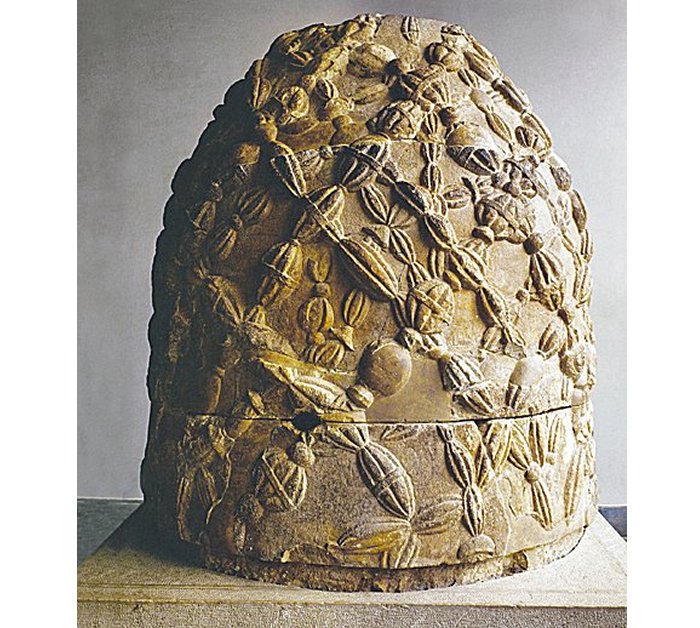
…with markings reminiscent of a dorje, the symbol of Vajra in Tibetan Buddhism, a Sanskrit word which is said to mean “thunderbolt,” in a reference to a follower achieving enlightenment in a single lifetime in a thunderbolt flash of indestructible clarity….

…and the Omphalos stone at the Temple of Apollo in Delphi.

Omphalos also had a meaning as a geodetic point of a master grid of electromagnetic energy around the Earth.

In Greek mythology, the King of the Gods, Zeus, was said to have released two eagles at opposite ends of the world, and commanded them to fly across the Earth, and meet at its center. It was at Delphi where the two eagles finally met.
Zeus was the god of sky and thunder…and wielder of the thunderbolt.

So what’s the message being communicated here, with the connection of the thunderbolts to Delphi, Zeus, and the dorje?
It might have something to do with understanding of the Ancients of the Electric Universe and our direct relationship to it…

…studied in-depth in the present day by the Thunderbolts Project…

…and others who have studied the topic of the Electric Universe and the related topic of free energy.

Ancient theaters can be found all over Greece, and Delphi was no exception, where it overlooks the ruins of the Temple of Apollo.
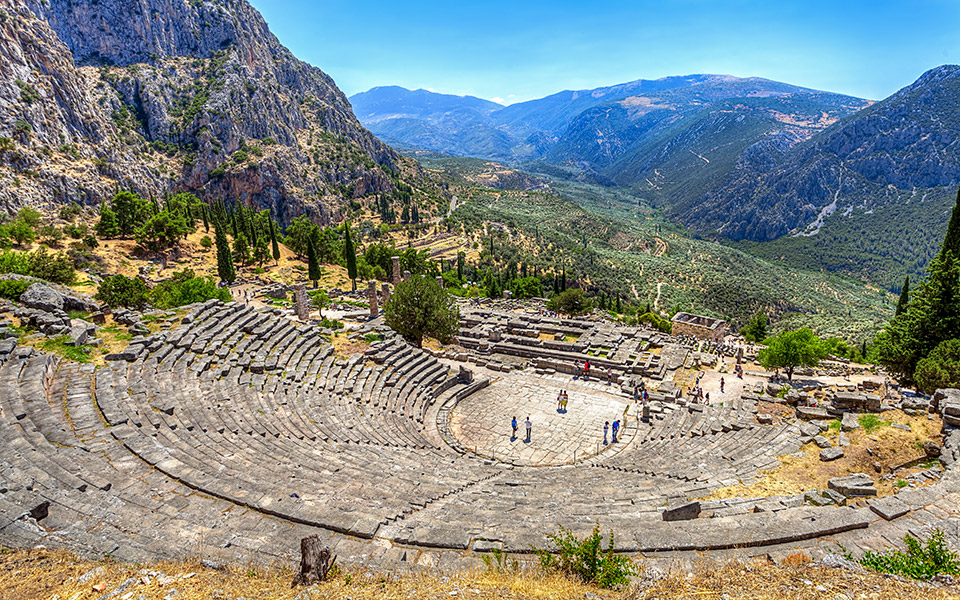
Interestingly, there are similar looking amphitheaters in North America, like the amphitheater on Cameron’s Bluff at Mt. Magazine in Arkansas, which the Works Project Administration of Franklin Roosevelt’s New Deal gets the credit for building in 1939.
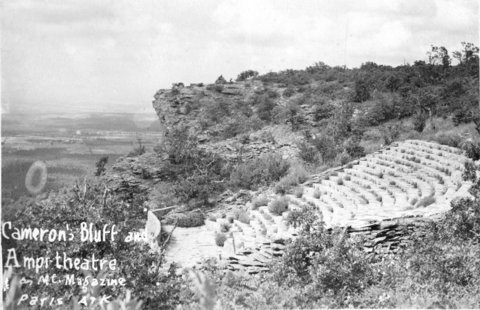

There is also what is described as a gravitational aqueduct in Delphi that carries water to Athens.

This stone bridge is located in a town in the vicinity of Delphi in Greece…

…as are these waterfalls.

Out of curiosity, I looked up Delphi, in the State of Indiana, to see what I would find.
Well, for one thing, it’s the home of the Wabash & Erie Canal…

…which was said to have been in use starting in 1840…

…with at least one beautiful old stone bridge crossing it…

…and this is an old post card of the Deer Creek Dam in Delphi, Indiana.
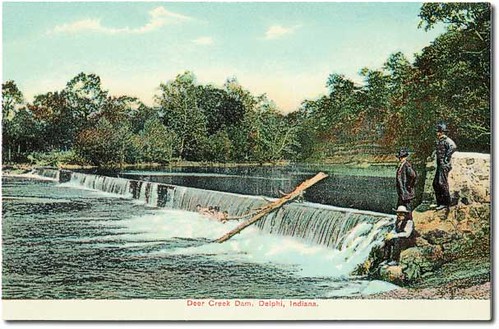
The Assion-Ruffing City Hall in Delphi, Indiana was said to have opened in 1865 (which was the last year of the American Civil War), and about 20-years later, the third-floor of the building was turned into an opera house.

Then we are told the Opera Hall shut down in 1915, and fell into a state of decay…


…until its renovation, and re-opening 100-years later in 2015.

Back to Delphi in Greece, it was the location of one of the four Panhellenic Games, which included both athletic and non-athletic events, and were called the Pythian games.
We are told this was the starting line of the stadium of Delphi…

…which was located northwest of the theater, in the highest part of the city, and called one of the best-preserved monuments of its kind.

I remember first learning about black-figure Greek art in the 6th-grade (1974 for me) when we studied Ancient Greece, where we are taught that the white Greeks had a style called black-figure in their pottery art, said to be reminiscent of silhouettes.
So here’s what this style looks like.

Could this possibly mean something else quite different from an artistic style?
Like, the Ancient Greeks were actually black, and not white as we have been taught?

The ancient city of Delphi, and its modern-counterpart is situated on Mount Parnassus, described as a mountain of limestone.

Limestone is classified as a carbonate sedimentary rock composed primarily of calcite and aragonite.
Is this limestone a natural rock formation…or ancient masonry?

The etymology of the word Parnassus is said to be Luwian, the hieroglyphic language of the Lycians of southwestern Anatolia, derived from a word meaning temple.
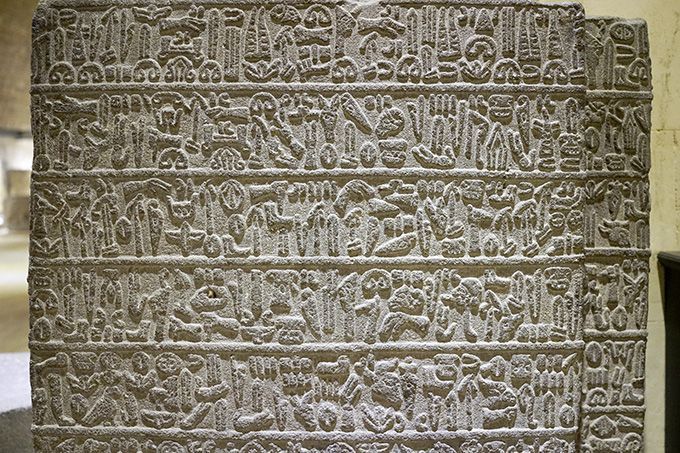
The Phaidriades are the pair of cliffs on the lower southern slopes of Mt. Parnassus which rise above Delphi.


There is polygonal masonry at Delphi…

…like what you find in Cuzco in Peru, another place called the navel of the world, at the Coricancha…

…and Sacsayhuaman, just outside of Cuzco…


…as well as at Edo Castle in Tokyo, Japan.

This is also at Edo Castle. Polygonal masonry is defined as a technique wherein the visible surfaces of the stones are dressed with straight edges or joints, giving the block the appearance of a polygon.

I first learned about Amphictonyes – associations of twelve neighboring states or tribes formed around a religious center – from a presentation given by Christine Rhone titled “Twelve Tribe Nations – Sacred Number and the Golden Age” at the 2009 Megalithomania Conference in Glastonbury, England.

She and John Michel co-authored a book of the same name. Among other things, they followed the Apollo – St. Michael alignment across countries and continents all the way to Jerusalem in Israel. They discuss records and traditions of whole nations being divided into twelve tribes and twelve regions, each corresponding to one of the twelve signs of the zodiac and to one of the twelve months of the year. All formed around a sacred center.

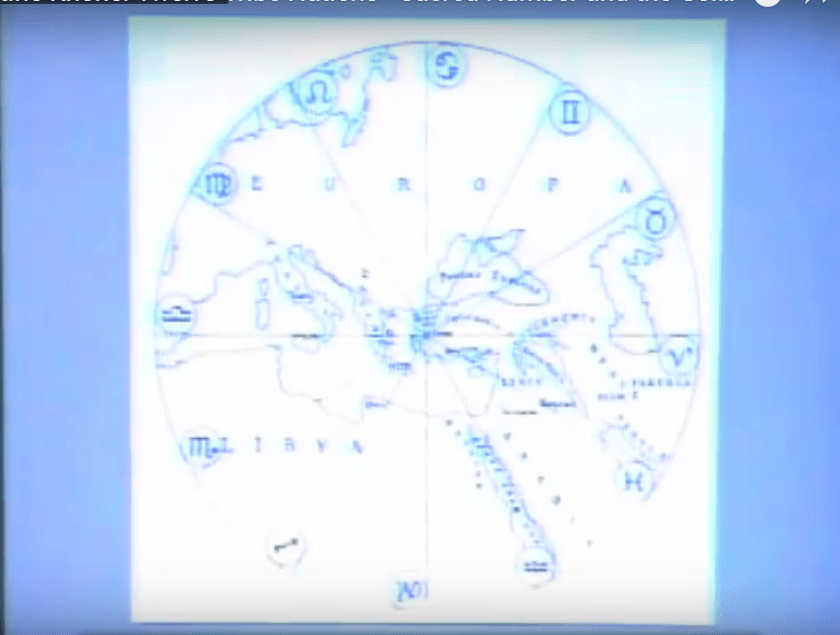
It stands to reason that these people would apply the same concepts of Harmony, Balance, Beauty, Sacred Geometry, and aligning heaven and earth, to building their communities and themselves that they applied to building all of the infrastructure of the earth.

The most important amphictonye, we are told, was the Delphic Amphictonye, or Amphictonyic League, centered around the Temple of Apollo in Delphi.

What if we are talking about an arrangement like what you see pictured here of the Twelve Tribes of Israel occurring in a flower of life pattern, from macro to micro, covering the surface of the Earth?

This information about amphictonyes helped to inform my belief that the Twelve Tribes of Israel were the basis for how civilization was laid out all over the Earth, as well as finding information about Lost Tribes of Israel in diverse places, like the South Pacific…
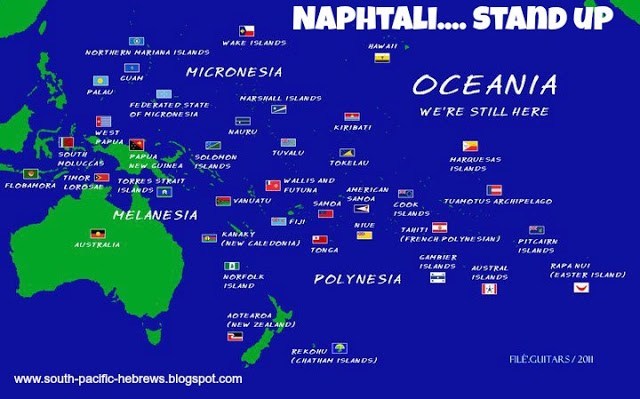
…the Kuki in India…
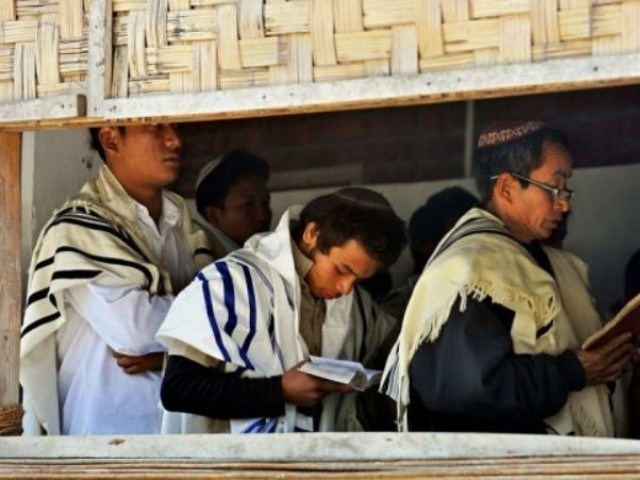
…the Pashtun of Afghanistan and Pakistan…

…and Madagascar.

There is another place near Delphi I would like to take a look at before I move on.
The Hosios Loukas Monastery is southeast of Delphi, and close to, if not on, the alignment I have been tracking.
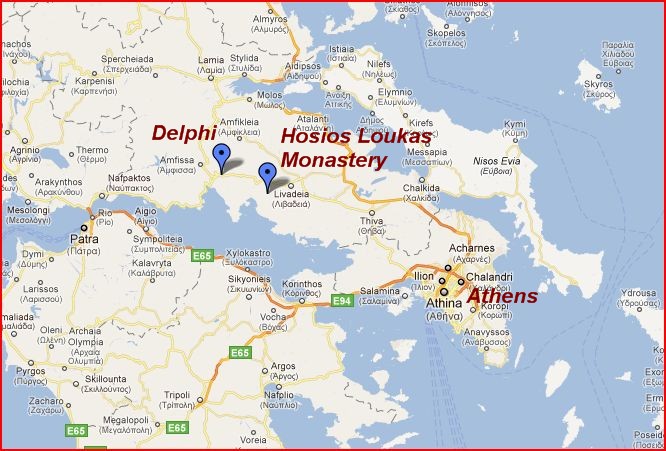
Hosios Loukas Monastery is one of three monasteries in Greece listed as UNESCO World Heritage Sites, along with Nea Moni on the island of Chios, which I looked at in the last post, and Daphnion, northwest of Athens.

It is located on the slopes of Mount Helicon…
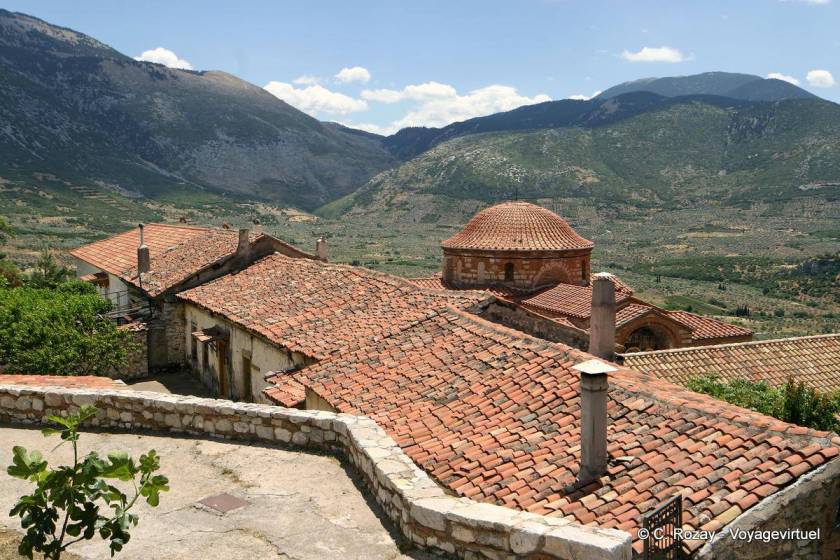
…the home in Greek myth of the nine muses, the inspirational goddesses of literature, sciences, and the arts.

This vaulting is in the interior of the Hosios Loukas Monastery…

…compared with vaulting in the catacombs under the Paris Opera…
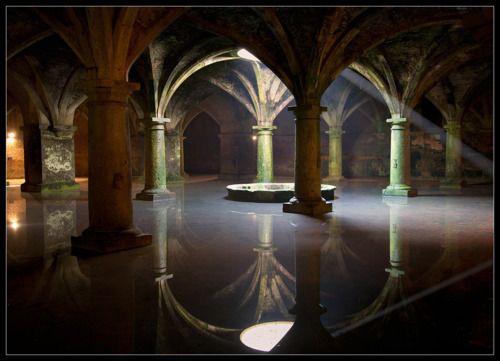
…and the underground vaulting that is found at what is called the old Portuguese fort on Iran’s Hormoz Island in the Strait of Hormoz in the Persian Gulf.
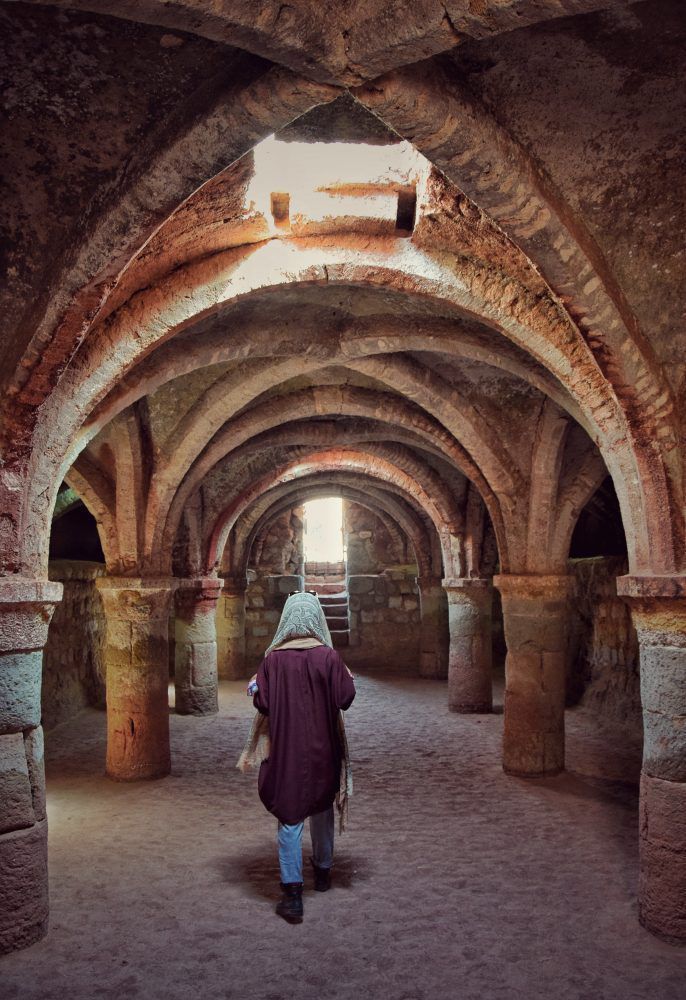
After leaving Delphi, I started to track a circle alignment instead of a linear alignment.
These cities and places in alignment are based upon sacred geometry contained within the Flower of Life pattern as depicted in this overlay…

…and can be found in lines and circles, as all sacred geometric shapes are found within the Flower of Life.

The alignment I am now tracking enters the Ionian Sea and crosses over the islands of Atokos, Ithaca and Kefalonia, which is the largest of…
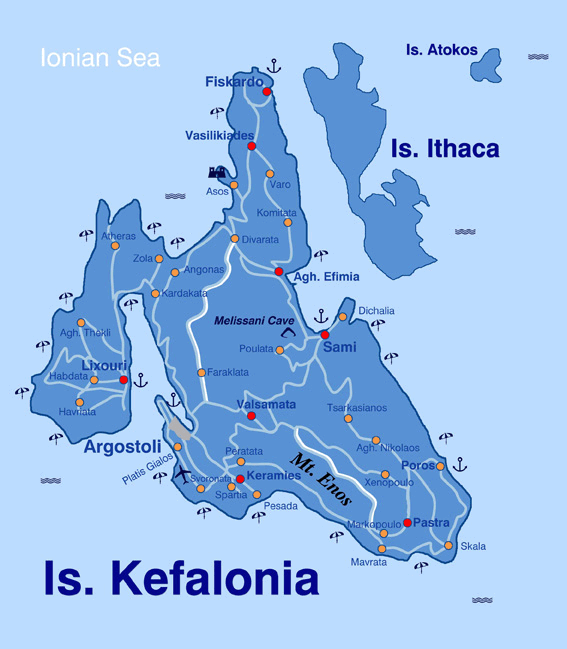
…the Ionian Islands of western Greece.

The small island of Atokos is privately owned, but visitors are allowed to come here and it is visited frequently by yachters…

…and is located just off the main shipping channel between Brindisi in Italy and Patras in Greece.

Just like I found on the island of Skyros in the Aegean Sea, the water is so crystal clear on Atokos, it looks like the boats are floating on air.

The island of Ithaca comes next. It is a regional unit of the Ionian Islands region, and its population in 2011 was a little over 3,000 people.
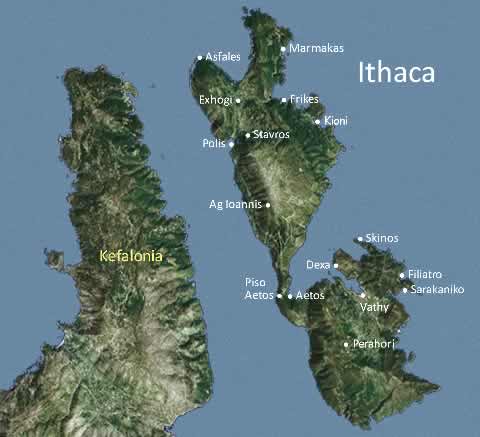
Its capital is Vathy, also the main harbor of the island, and which looks to be artificially made…
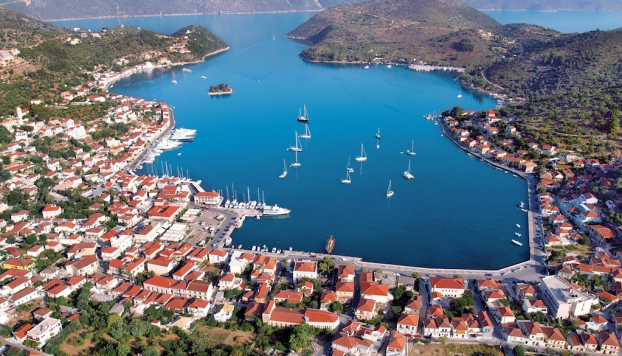
… with its masonry banks…

…and artificial island.
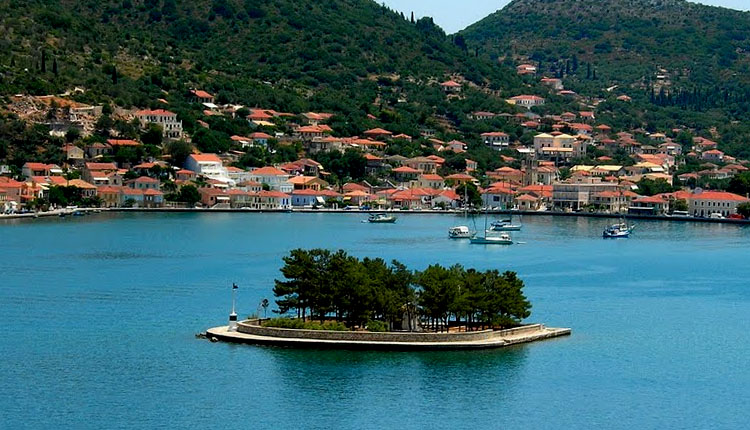
Modern Ithaca is generally identified as the home of Odysseus, whose ten-year-long adventure in returning to Ithaca after the fall of Troy is the subject of Homer’s “Odyssey.”
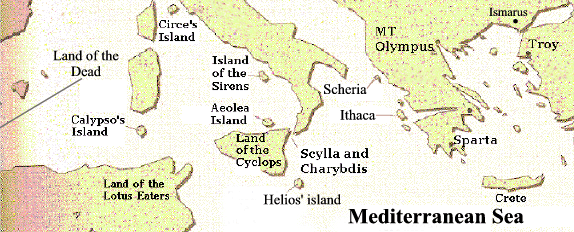
Kefalonia, just southwest of Ithaca, is the largest of the ionian Islands and also a regional unit of the Ionian Islands region.

The capital of Kefalonia is Argostoli, which it has been since 1757, and called one of the busiest ports in Greece, with its shaped shoreline…

…and masonry banks, like those of Vathy on Ithaca.

The ancient Greek-temple-looking Fanari Lighthouse, or Lighthouse of Saints Theodore, in Argostoli was said to have been built by the British in 1829…

…and the De Bosset Bridge in Argostoli was said to have been inspired in 1813 by the Swiss engineer Charles de Bosset, who became governor of the island in 1810 when the Republic of the Ionian Islands was under British patronage.

The obelisk on an artificial island beside the bridge was said to have been erected to commemorate the British builders and patrons of the bridge.

The Castle of Saint George is 4-miles, or 7-kilometers, southeast of Argostoli, above the village of Peretata.

It was said to have been built in the 12th-century A.D. by the Byzantines, and improved by the Venetians. Apparently, Peretata as Agios was the capital of Kefalonia until it was moved to Argostoli in 1757.


Assos Castle or fortress is on Kefalonia, and was said to have been built on top of the Assos Peninsula by the Venetians in the 16th-century A.D. to protect Assos village from pirates and/or a naval invasion.
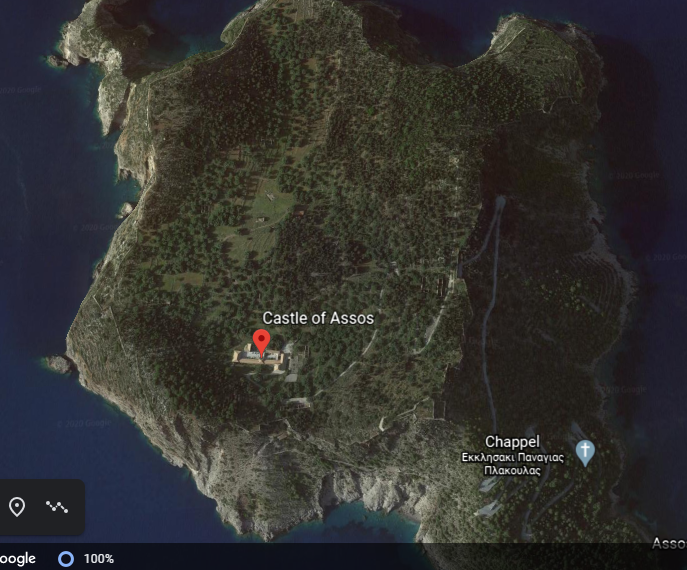
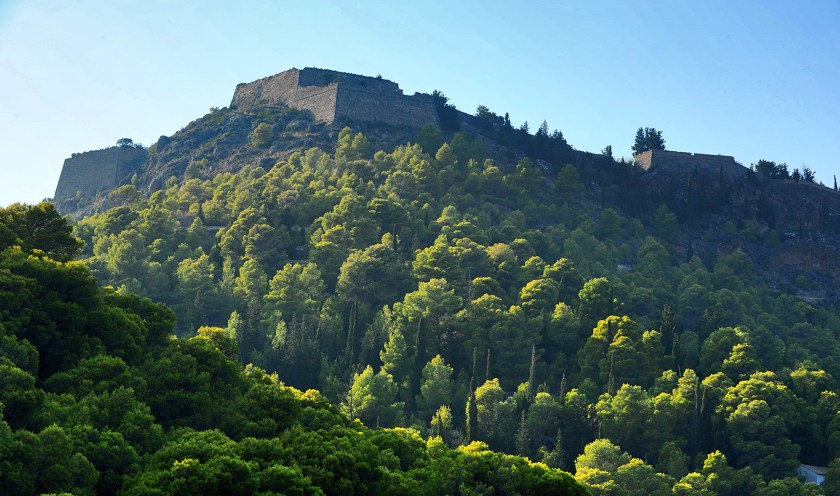

Before I close-out this particular post, I would to share what I found about the history of the Ionian Islands, of which there are seven main islands, in the last few hundred years.
I will start when the Ionian Islands were said to have become part of the Venetian Republic in 1500 A.D., also known as La Serenissima, or Most Serene Republic of Venice, described as a sovereign state and maritime republic.

Then in 1797, the Treaty of Campoformio was signed by Napoleon Bonaparte and Count Philipp von Cobenzi, as representatives of the French Republic and the Austrian Monarchy respectively.

This treaty disbanded and partitioned the Venetian Republic by the French and the Austrians, and the Ionian Islands were awarded to France.
At that time, the Ionian Islands became the short-lived French Department of Ithaque, as it fell to the Russians in 1798, and was officially ended in 1802.

Between the years of 1800 and 1807, the Ionian Islands were known as the Septinsular Republic under Russian and Ottoman rule after the Russian/Ottoman fleet defeated Napoleon Bonaparte.

Then in 1807, Napoleon signed two agreements in the town of Tilsit in what was the Prussia in East Germany, one between Emperor Alexander I of Russia, and the second treaty was signed with Prussia, and the Ionian Islands were returned to France, becoming a French Protectorate.

Then, in 1809, the British blockaded the Ionian Islands as part of the war against Napoleon, in September of that year, hoisted the British flag on the island of Zakynthos, with Kefalonia and Ithaca soon surrendering. The British installed provisional governments here.
The Treaty of Paris of 1815 recognized the United States of the Ionian Islands, and established them as a British Protectorate.

Then, in 1864, the Ionian Islands were transferred back to Greece to become a full member of the Greek State when the British-backed Prince William of Denmark became King George the I of the Hellenes in 1863.

When he was nearing the 50th-year of his reign, he was assassinated in 1913 in Thessaloniki, near the White Tower…

…by a Socialist named Alexandros Schinas, who said, when he was arrested, that he killed the king because the king had refused to give him money.
So, all along the alignment, I have found wars, treaties, partitions, regime changes, and assassinations by individuals of highly questionable mental health, or politically-motivated, in our historical narrative. In a future post, I will be putting all of the information I have found regarding this subject along the way into one post because it illustrates some of the modus operandi by which the old world order was taken down, and replaced with a new one.

In the next post, I am heading for the narrow strait of Messina between the toe of the boot of the Italian Peninsula and the island of Sicily, and the location where Odysseus would have encountered Scylla and Charybdis on his adventurous trip home from Troy.

